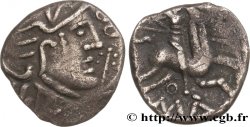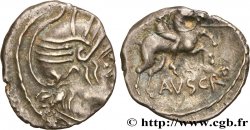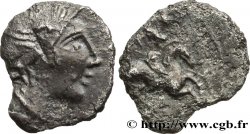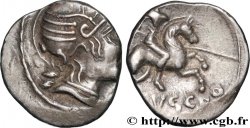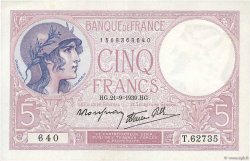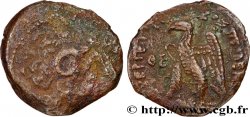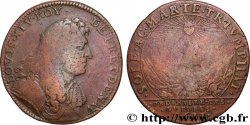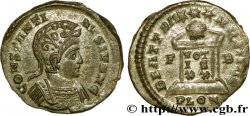v43_1112 - GALLIA - RHONE VALLEY Obole à légende RIGA
MONNAIES 43 (2010)
Starting price : 520.00 €
Estimate : 800.00 €
Realised price : 520.00 €
Number of bids : 1
Maximum bid : 625.00 €
Starting price : 520.00 €
Estimate : 800.00 €
Realised price : 520.00 €
Number of bids : 1
Maximum bid : 625.00 €
Type : Obole à légende RIGA
Date: c. 50 AC.
Metal : silver
Diameter : 9,00 mm
Orientation dies : 1 h.
Weight : 0,47 g.
Rarity : R3
Coments on the condition:
Monnaie frappée sur un flan un peu court pour le droit, mais avec un revers complet et idéalement centré. Patine grise
Catalogue references :
Obverse
Obverse legend : ANÉPIGRAPHE.
Obverse description : Tête masculine à gauche imitée des oboles à trois mèches en lambda sans favoris.
Reverse
Reverse legend : R/I/G/A.
Reverse description : Quatre rayons d’une roue, cantonnés de lettres.
Commentary
Nous avons déjà dressé le bilan des connaissances pour ce très rare type d’obole épigraphe dans MONNAIES XIX, à l’occasion de la vente du n° 421.
Les provenances des deux exemplaires du Nouvel Atlas sont localisées en Isère et en Haute-Savoie.
L’exemplaire proposé ici présente un revers particulièrement complet avec les lettres RIGA entières ; sans doute parmi les plus beaux exemplaires connus !.
Les provenances des deux exemplaires du Nouvel Atlas sont localisées en Isère et en Haute-Savoie.
L’exemplaire proposé ici présente un revers particulièrement complet avec les lettres RIGA entières ; sans doute parmi les plus beaux exemplaires connus !.








 Report a mistake
Report a mistake Print the page
Print the page Share my selection
Share my selection Ask a question
Ask a question Consign / sell
Consign / sell
 Full data
Full data